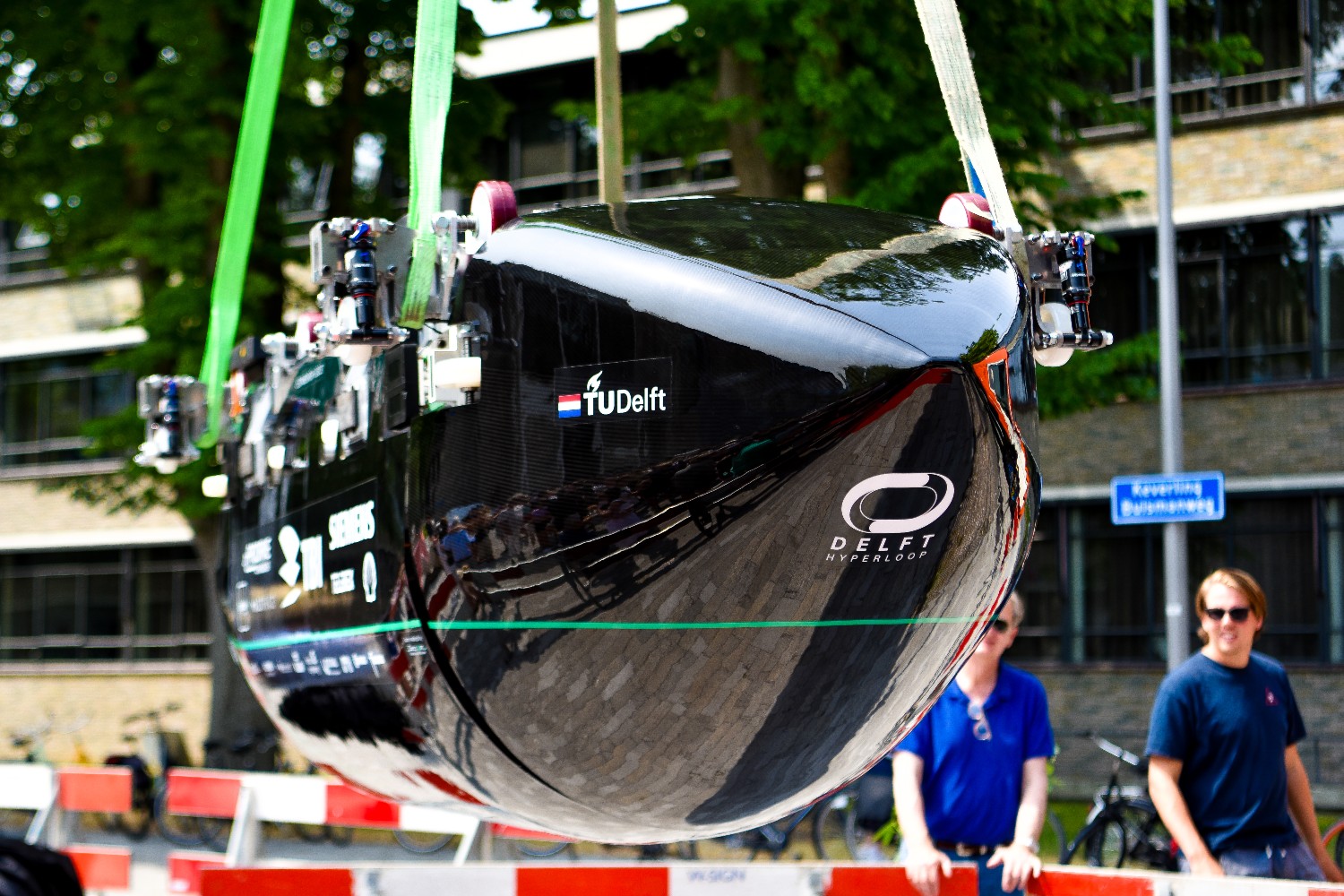The TU Delft Hyperloop team showed their ‘pod’ on Saturday 17 June. They will use it in this summer’s Hyperloop Week in Edinburgh. What are their bonus points?
Helios II is the Delft entry for the European Hyperloop Week next summer in Edinburgh. (Photo: Delft Hyperloop)
Beaming students, proud parents and a futuristic black capsule hanging shimmering in the lifting straps of a crane. For a year, 40 students from the Delft Hyperloop team have been working up to this summer presentation of their Helios II.
Every year a new team of students builds a capsule for the Hyperloop system – a visionary public transport system that allows capsules (or pods) to travel through vacuum tubes at the speed of a commercial aircraft – from scratch. The Hyperloop was an original idea of Elon Musk, whose SpaceX company ran an annual competition for four years between 2015 and 2019. Then, four European teams continued the competition with fewer binding rules to make more room for innovative ideas. The collaborating teams were: Delft Hyperloop; Hyperloop Edinburgh (HYPED); Swissloop; and, Hyperloop UPV (Valencia). From 2021, an annual European Hyperloop Week (EHW) took place at one of these venues with a demonstration ride on a 50 metre track as the finale.
What are the assets?
What are the assets of the Helios II in Edinburgh? The contact person, Nynke Hilverda, doesn’t have to think long. “We have three bonus points,” she says over the phone. One, the Delft Hyperloop team chose a suspended construction because a cabin suspended under the rail is inherently stable. At rest, it will just hang. Incidentally, there is no physical contact between the pod and the magnetic rail as electromagnets levitate the pod just above the rail.
Another innovation is that the propulsion comes from the pod itself. Previously, it was often the track that propelled a passive pod. The propulsion now consists of switched magnetic fields pushing against the permanent magnets in the track. Apart from the pod itself, there is no moving part in this linear flux switching permanent magnet motor.
The third point that Hilverda mentions is the innovative cooling system. Housing the drive in the pod means that cooling must also be provided there. But because the pod moves through a vacuum, no cooling airflow is available. Instead, the engine transfers its heat to a cooling material that thereby changes phase (phase change material or PCM). A PCM cooling package can be exchanged in its entirety.
The European Hyperloop Week in Edinburgh will take place between 17 and 23 July 2023. So the team has less than a month to transport the capsule and its magnetic track to Scotland and install them there.
On the final day of Hyperloop Week, eight prizes will be awarded among the 30 competing teams. These include five technical prizes and a system design prize. You can see how this works out for the TU Delft team on their Instagram channel.
- Read more about the history of the Hyperloop on a well-structured Wikipedia page. There is also a list of trains floating magnetically above the track.
Do you have a question or comment about this article?
j.w.wassink@tudelft.nl


Comments are closed.